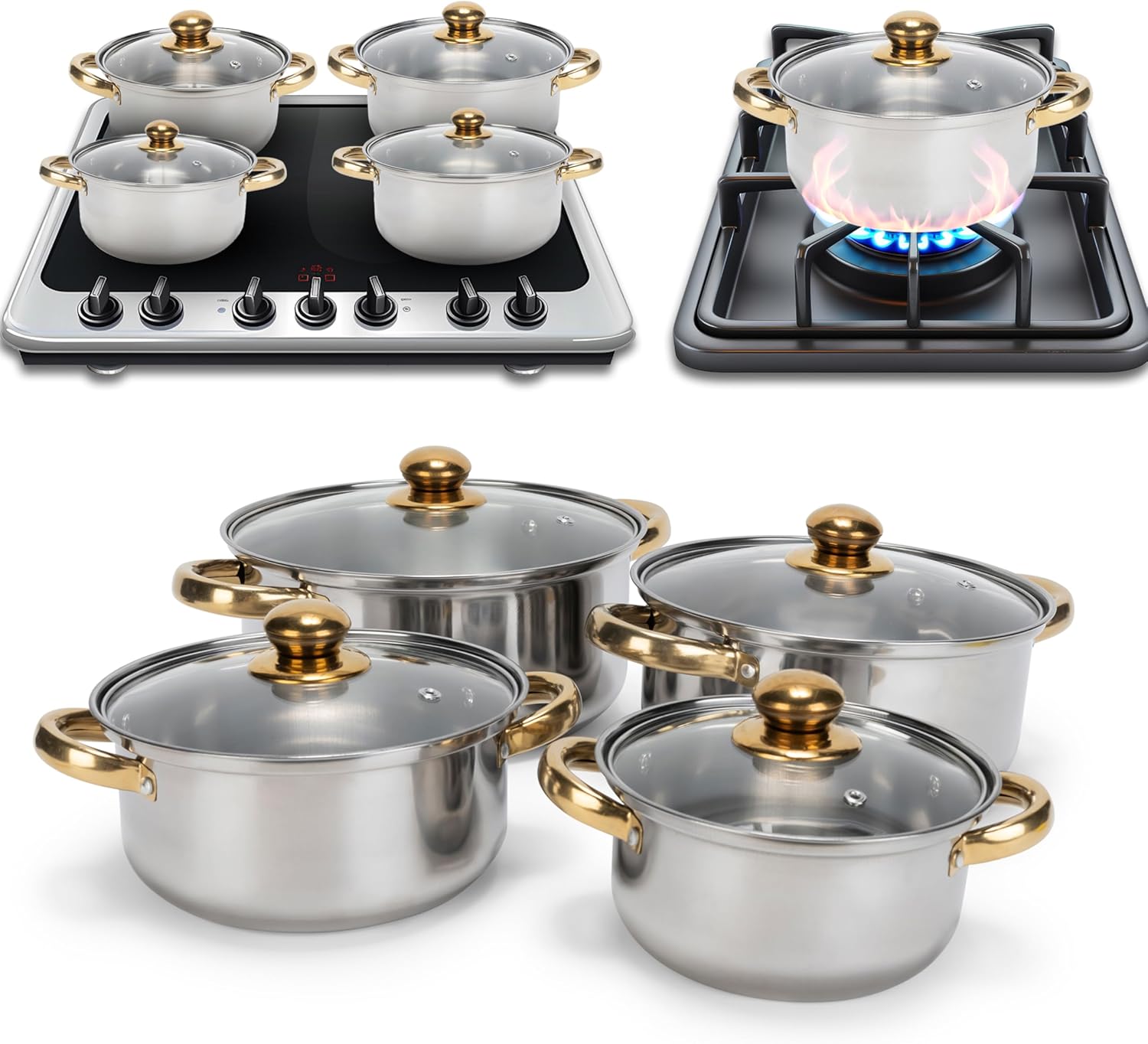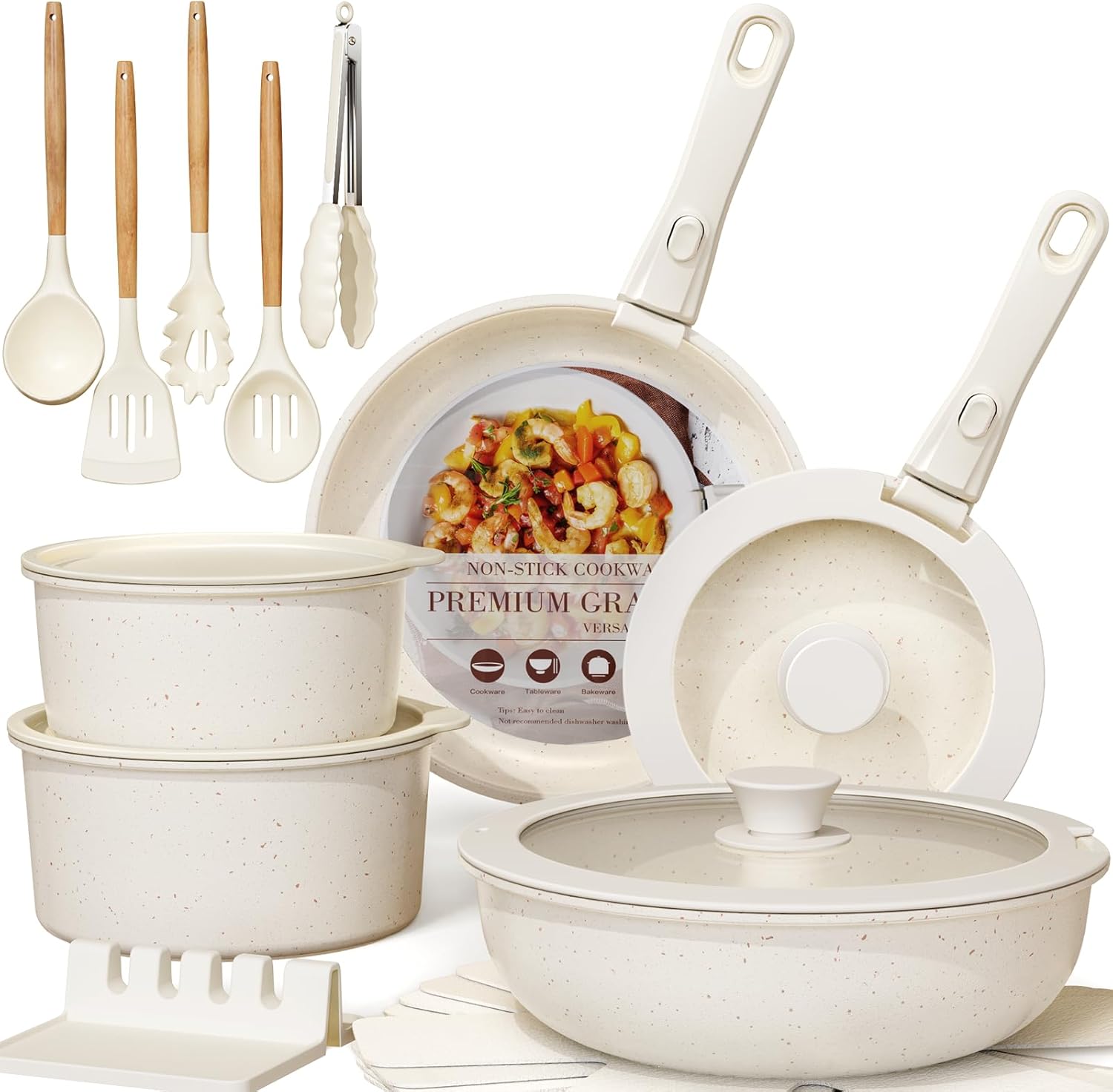To avoid non-stick cookware, choose alternatives like stainless steel, cast iron, or ceramic. Opt for cookware labeled PTFE-free or PFOA-free for healthier options.
How to Avoid Non Stick Cookware:Exploring the vast array of cookware can be overwhelming, especially when health concerns are involved. Non-stick pots and pans have been kitchen staples for their convenience, but recent health reports suggest caution due to potential chemical exposure. For those seeking safer cooking environments, it’s crucial to understand which materials make for the best substitutes.
Shifting to cookware made from materials such as stainless steel, cast iron, or ceramic not only addresses these concerns but also provides durability and longevity. These alternatives often boast superior heat distribution, enhancing the cooking experience. Chefs and home cooks alike are turning to these options not just for their safety profile, but for the quality and flavor they impart to food. Remember to check labels for PTFE-free or PFOA-free products, as these indicate a move away from traditional non-stick coatings. With the right information, choosing safe and effective cookware becomes a simple task, ensuring peace of mind and delicious results in the kitchen.

Credit: timesofindia.indiatimes.com
The Risks Of Non-stick Cookware
The Risks of Non-Stick Cookware have sparked debates. This cookware makes cooking and cleaning easy. Yet, it may harm our health and environment. Let’s dive deeper.
Health Concerns Linked To Teflon
Teflon coatings release toxic chemicals when overheated. These chemicals can cause flu-like symptoms in people, known as “Teflon flu”. Long-term exposure may lead to more serious health issues. Research shows a link between Teflon and high cholesterol, thyroid disorders, and even cancer.
- Flu-like symptoms from fumes
- High cholesterol risks
- Thyroid problems
- Possible cancer link
Environmental Impact Of Ptfe Coatings
The production of PTFE, the chemical used in non-stick coatings, poses environmental risks. It releases greenhouse gases and persists in the environment. Wildlife and ecosystems suffer from its long-lasting effects. PTFE does not break down easily, leading to pollution and harm to wildlife.
| Environmental Issue | Impact |
|---|---|
| Greenhouse Gases | Increases global warming |
| Persistent Pollution | Harms wildlife and ecosystems |
| Non-degradable | Long-term environmental damage |
Alternatives To Traditional Non-stick Pans
Many cooks seek safe, durable alternatives to non-stick cookware. Traditional non-stick pans often contain chemicals that can wear off. Over time, these can pose health risks. Let’s explore healthier options for your kitchen.
Ceramic Coated Cookware
Ceramic coated cookware offers a non-toxic, non-stick surface. It’s made with natural sand-derived silicon, not chemicals. This makes it a safe choice for everyday cooking. Ceramic pans heat evenly and clean up easily. They come in various sizes and colors to match any kitchen decor.
- Free of PTFE and PFOA
- Even heat distribution
- Easy to clean
Cast Iron Skillets
Cast iron skillets are a robust alternative. They improve with age. A well-seasoned cast iron skillet becomes naturally non-stick. It’s perfect for searing, frying, and baking. Cast iron retains heat, making it ideal for consistent cooking. With proper care, these skillets last for generations.
| Feature | Benefit |
|---|---|
| Naturally non-stick when seasoned | Reduces need for oil |
| Excellent heat retention | Cooks food evenly |
Stainless Steel Options
Stainless steel cookware is a versatile choice. It’s known for its durability and resistance to rust. Stainless steel pans heat quickly and evenly. They don’t react with acidic foods. This means your cookware won’t alter the taste of your meals. For a non-stick experience, preheat the pan and use a bit of oil.
- Heat pan before adding oil
- Use oil to create a temporary non-stick surface
- Let food cook undisturbed for easy release
Benefits Of Switching To Safer Cookware
Choosing safer cookware is a smart move. It enhances kitchen safety and health. Let’s explore the benefits of making the switch.
Enhanced Durability And Longevity
Non-toxic cookware lasts longer. Materials like cast iron and stainless steel are robust. They resist scratches and dents. Users enjoy these items for years, unlike non-stick counterparts.
Improving Food Flavor
Safe cookware materials can improve taste. They distribute heat evenly. This cooks food better, unlocking richer flavors.
Ease Of Maintenance
- Simple cleaning: Safer cookware cleans easily. Hot water and a soft sponge often suffice.
- No special tools: Unlike non-stick pans, metal utensils won’t harm these surfaces.

Credit: m.youtube.com
Cooking Techniques For Non Non-stick Surfaces
Mastering the art of cooking on non non-stick surfaces can transform your culinary skills. Durable materials like cast iron, stainless steel, or carbon steel offer superior flavor. They require unique techniques. Let’s explore these methods.
Proper Seasoning Of Cast Iron
Seasoning cast iron is crucial. It creates a natural non-stick layer. The process is simple:
- Clean the skillet thoroughly.
- Apply a thin oil layer.
- Heat it in the oven.
Repeat regularly. Your cookware will last for generations.
The Importance Of Preheating
Preheating your pan is a must. It ensures even cooking. Follow these steps:
- Place the pan on medium heat.
- Wait a few minutes.
- Test the heat with water droplets.
If they dance, it’s ready for cooking.
Using Fats Effectively
Fats prevent sticking and add flavor. Here’s how to use them right:
- Add fat after preheating the pan.
- Coat the surface evenly.
- Choose high-smoke-point oils for high heat.
Butter, lard, or oils like avocado work well.
How To Choose The Right Cookware
Choosing the right cookware is crucial for healthy cooking. It can be tricky to navigate through the various options available. This guide will help you pick the best cookware that is safe and efficient for your kitchen.
Identifying Quality Materials
The material of your cookware affects its safety and durability. Look for these materials:
- Stainless Steel: It’s durable and resists corrosion.
- Cast Iron: Offers excellent heat retention.
- Ceramic: Provides a non-stick surface without harmful chemicals.
- Glass: Chemical-free and easy to clean.
Choose materials free from PFOA, PFAS, and other toxic chemicals.
Understanding Heat Conductivity
Good heat conductivity means even cooking and energy efficiency. Materials like aluminum and copper are great conductors. They heat up fast and cook evenly. However, they should be coated or used as a core in stainless steel to avoid food contamination.
Compatibility With Cooking Methods
Match your cookware with your cooking habits:
| Cookware Type | Best For |
|---|---|
| Non-Stick Pans | Low-fat cooking, eggs, pancakes |
| Stainless Steel Pots | High-heat searing, boiling |
| Cast Iron Skillets | Baking, grilling, sautéing |
| Ceramic Cookware | Slow cooking, stews |
Ensure your cookware is compatible with your stove type, be it induction, gas, or electric.
Care And Maintenance Of Alternative Cookware
Care and Maintenance of Alternative Cookware keeps your kitchen tools in top shape. This guide helps you care for non-stick alternatives. Proper care ensures longevity and performance.
Cleaning Tips For Longevity
Keeping your cookware clean is crucial. Here are steps for effective cleaning:
- Use warm water and soap. It removes most food particles.
- Soak if needed. Tough residue needs soaking for 15-30 minutes.
- Use soft sponges. They prevent scratches on cookware surfaces.
- Avoid harsh chemicals. They can damage cookware over time.
- Dry thoroughly. This prevents rust and water spots.
Storing Your Cookware
Proper storage protects your cookware. Follow these tips:
- Use racks or hooks. They save space and prevent scratches.
- Keep lids separately. This avoids chipping and scratching.
- Avoid stacking. If necessary, place a soft cloth between items.
Restoration Techniques
Sometimes, cookware needs extra care. Here’s how to restore them:
- Remove rust with a mixture of baking soda and water.
- Polish surfaces with a soft cloth and vinegar for shine.
- Season if necessary. This applies to cast iron cookware.
Remember, gentle care and regular maintenance keep your cookware like new. Follow these steps to enjoy your kitchen tools for years.
Impact On Health And Wellness
The Impact on Health and Wellness from cookware is big. Non-stick pots and pans are easy to use. Yet, they can harm our health. This section talks about how to avoid these risks.
Reducing Exposure To Harmful Chemicals
Some non-stick cookware gives off bad chemicals when hot. These chemicals can make us sick. Choosing the right cookware keeps these chemicals away. Here are tips:
- Use cast iron – It’s safe and lasts long.
- Try ceramic – It’s non-stick without the bad stuff.
- Go for stainless steel – It’s good for many dishes.
Remember to cook at lower temperatures to avoid releasing bad chemicals.
Nutritional Benefits Of Cooking With Safer Cookware
Safe cookware keeps food’s good stuff. It makes our meals healthier. Here’s how:
- Keeps nutrients – Less heat loss means more vitamins in your food.
- Better flavor – Safe cookware can make food taste better.
- Less oil needed – This means healthier eating every day.
Choosing safe cookware is a step towards better health. It helps us avoid bad chemicals. It also makes our food more nutritious.
Making The Transition To Safer Cookware
Making the switch to safer cookware is smart for health and the environment. It can feel daunting, but it’s simple with the right steps.
Budget-friendly Tips For Upgrading
Quality cookware is a kitchen essential. But cost is a common concern. Here are tips to help upgrade without breaking the bank:
- Start small: Begin with one versatile piece, like a cast iron skillet.
- Shop sales: Look for discounts during holiday sales or at outlet stores.
- Buy sets: Cookware sets often offer better value than individual pieces.
Incorporating New Cookware Into Daily Use
New habits form with consistent practice. To integrate new cookware, consider these steps:
- Phase out: Gradually replace non-stick items with safer alternatives.
- Learn new care routines: Season cast iron; handwash stainless steel.
- Experiment with recipes: Some dishes cook better in specific materials.
Eco-friendly Disposal Of Old Non-stick Pans
Disposing of old pans responsibly is key to protecting the environment. Follow these eco-friendly tips:
- Recycle: Check local recycling programs for Teflon pan disposal.
- Donate: If in good condition, donate to thrift stores or charities.
- Repurpose: Use old pans for arts and crafts or as a garden pot.

Credit: food.ndtv.com
Frequently Asked Questions
How Do You Keep Food From Sticking To A Non Stick Pan?
To prevent food from sticking, use low to medium heat and apply a thin oil layer before cooking. Avoid overcrowding the pan and refrain from using metal utensils to protect the non-stick surface. Regularly clean the pan gently to maintain its non-stick quality.
Why Do Chefs Not Use Non Stick Pans?
Chefs often avoid non-stick pans because they can’t withstand high heat and don’t sear foods as effectively as other materials.
How To Make A Non-stick Pan Last Longer?
Use low to medium heat to preserve your non-stick pan’s coating. Avoid metal utensils to prevent scratches. Hand wash gently without abrasive cleaners. Dry the pan thoroughly before storing. Regularly season the pan if recommended by the manufacturer.
Why Should You Avoid Non-stick Cookware?
Non-stick cookware can release toxic chemicals at high heat, posing health risks. Its coating often wears off and requires careful maintenance. Choose alternatives for safer cooking.
Conclusion
Steering clear of non-stick cookware is simpler with the right knowledge. Embrace alternatives like cast iron or stainless steel for healthier cooking. Remember, your choice impacts both your well-being and the environment. Make the switch today for a safer kitchen tomorrow.
Let’s prioritize health in every meal.





Leave a Reply